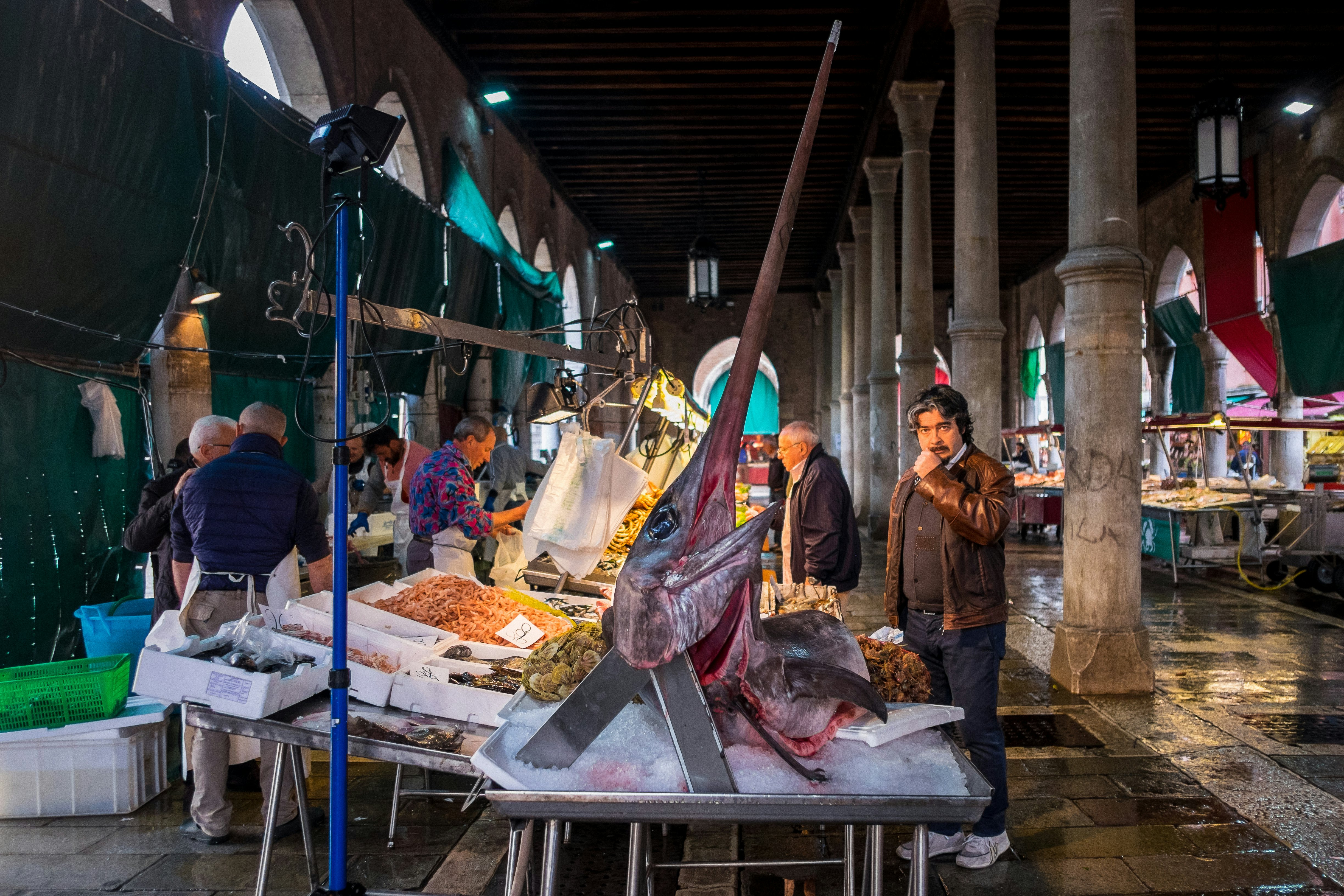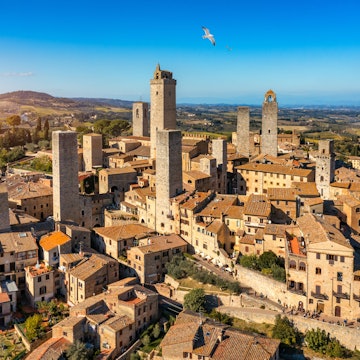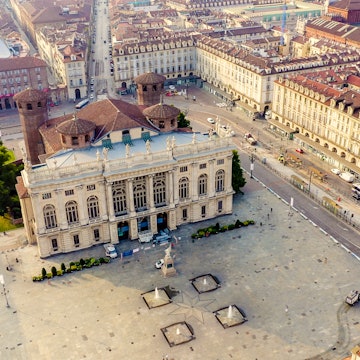

Grocery shopping is serious business in Italy. Here’s how to stock up like a local. Shutterstock
A stop at the grocery store is a ritual whenever I arrive in and depart from Italy, where I’ve lived on and off for years.
My return visits to Sicily always begin with stocking up on the staples: milk, coffee and pasta. Then, before I leave, I stuff my suitcase with specialty items to take back.
I’m not the only one who carves out precious time in Italy for a visit (or several!) to the grocery store: in recent years, videos about Italian supermarkets have racked up millions of TikTok views. Whether you visit an ultra-modern Carrefour or a traditional open-air market, you’ll get a sense of how Italians actually shop, eat and, well, live. It’s a cultural immersion of sorts.
Even better, there’s the tangible and delicious outcome of any grocery excursion – whether you snag miniature ready-to-drink Campari sodas or high-quality, low-cost slices of prosciutto crudo. Any visit to an alimentari (grocery store), outdoor market or even a street-corner vendor will give you a true taste of the country’s defining cuisine.

Types of Italian supermarkets and grocery shops
Options for Italian food shopping fall under a few categories, differentiated by size, scope and quality. The broadest, most universal of the group includes major European and Italian supermarket chains, such as Conad, Lidl and Carrefour. These all-encompassing stores sell everything from meats, breads and frozen foods to hard liquor, beer and toiletries. Depending on where you go in Italy, you may encounter these chain stores in smaller, pared-down versions that provide easy access to baseline items. Carrefour, for instance, offers the more compact Carrefour Express.
If you’re shopping for a specific food, it’s best to try a specialty shop instead. Such stores include the macelleria, or butcher shop; the pasticceria for sfogliatelle, cannoli and other pastries; the panetteria or panificio, which focuses on bread products; the enoteca for wine; and the pescheria, where heaps of whole fishes are preserved under ice. Because such shops focus on just one culinary genre, they tend to produce better-quality groceries than their prepackaged counterparts at the supermarket.
Categorized somewhere between the major chains and the specialty shops, locally owned alimentari sell select groceries on a smaller scale than Italy’s supermercati.
For those who’d rather shop outside, head to any of Italy’s lively food markets, which focus on whatever’s in season and of the region. Come springtime, you’ll peruse stalls of matte-green artichokes and zucchini flowers, while Nutella-stuffed cornetti (croissants) and Parmesan wedges are mainstays year-round. Some markets, including Florence’s Mercato di Sant’Ambrogio, are indoors and also sell pre-made foods, which means you can snack as you shop. Prices vary from vendor to vendor, so take a full lap before you settle on a purchase.
In the same spirit, you may also stumble across one-off street vendors who turn city streets into specialty markets. In Palermo, I exclusively purchase fennel from Rafaello, the vegetable salesman of Via Chiavettieri.
How Italians typically shop for grocery items
I once watched a Sicilian man order bread by attaching a plastic bucket to a rope, dropping in a few coins and lowering the contraption from his third-floor balcony to the ground-floor panificio with a pulley. Once the bucket descended, the man yelled for “Angelo” – and, materializing on command, said baker swapped the bucket’s change with a loaf of semolina. This vivid example shows just how much Italians prioritize ultra-fresh ingredients, and take the same care in shopping for ingredients as they do to in cooking them up.

The Italian produce you’ll want to stock up on
Pastas of all shapes and sizes
Walk down the pasta aisle at any Italian grocery store and you’ll encounter a slew of shapes and colorful names that go far beyond spaghetti. Carrefour’s Mafalde Terre d’Italia ranks as my favorite Italian pasta, though I also love any brand of candele: long, thick tubes popular in Campania. If you’re shopping to stock your kitchen at home, remember that a bag of pasta – whether an artisanal rigatoni or a new-to-you shape – makes for a low-priced, airport-security-friendly souvenir.
Salumi
Nothing compares to Italy’s cured meats, or salumi, which are akin to an art form. Whether you’re at Lidl or at a market stall, you’ll never go wrong with a combination of prosciutto, bresaola and coppa. Hang onto the phrase “un etto,” which translates to 100 grams: it’ll come in handy when ordering a taste of multiple meats.
Sweet treats
You can’t go wrong with gelato and tiramisù at an Italian trattoria, it’s true – yet it’s easy to stock your pantry with only-in-Italy sweets as well. For a caffeinated sweet treat, try Pocket Coffee, individually wrapped chocolates filled with espresso (no cup required). If you’re traveling during the Easter or Christmas seasons, grab at least one colomba or panettone. I had never enjoyed this sweet fruit-filled bread (with the exception of California brand Panettone from Roy) until I spent a winter in Italy and encountered a heavenly chocolate-chip variation. It begs for a leisurely breakfast on a balcony.
Pistachio cream and other regional specialties
I never need an excuse to visit Sicily. But if you’re looking for one, consider pistachio cream. This regional spread transforms the island’s trademark pistachios into a smooth butter, best enjoyed atop Mulino Bianco cookies or straight from an espresso spoon. Wherever you are in Italy, lean into regional specialities as you shop. Calabria, for instance, specializes in ’nduja – a spreadable sausage – and sweet red onions, while Florentine markets sell fresh Tuscan truffles.

Tips for shopping in Italian food shops
Shopping etiquette
The first time I bought Italian produce, I tried to ring up a bag of tomatoes – only to backtrack to the supermarket’s vegetable aisle. For Italians weigh their produce before checking out, receiving a sticker with the price that they take to the register when they’re ready to pay. They also typically bag their own items, so don’t expect your cashier to intervene. Ideally, you’ll bring your own bag, though you can purchase one at most stores.
Best times to shop
Plan your market visit as early as possible to ensure maximum freshness, for you don’t want fish or pastries that have been sitting in the case all day. What’s more, the earlier you go, the more crowds you’ll avoid. Markets often fill up by mid-morning and close by mid- or late-afternoon.
As for grocery chains, any time works, so long as you check the store’s schedule when shopping on a Sunday or Monday (most Italian stores, particularly smaller ones, close or limit their hours on at least one of those days). While grocers are likelier to stay open all week, it depends on the store.

Payment methods
There’s no one-size-fits-all method once you’re ready to check out. Supermarkets will usually take your debit or credit card (especially in big cities), though you should always keep cash on hand, just in case. While cities such as Florence are increasingly accepting contactless payments, the technology is inconsistent in smaller, less tourist-visited towns.
If you’re visiting a market stall, a specialty shop or a street vendor, you’ll want both cash and coins; vendors appreciate smaller denominations for smaller purchases such as a slice of focaccia or a brioche. On more than one occasion, workers have refused to break my bills for purchases under one euro, leaving the breakfast that might have been in its case.
















